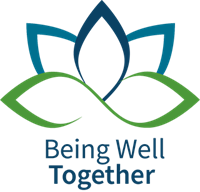 The ACR® is committed to supporting your well-being. Resources like these, curated by fellow radiologists, are designed to help identify activities that can enhance your well-being and mitigate burnout. These resources are part of the ACR Radiology Well-Being Program, which includes access to the Well-Being Index for ACR members and an ACGME-aligned well-being curriculum for program directors.
The ACR® is committed to supporting your well-being. Resources like these, curated by fellow radiologists, are designed to help identify activities that can enhance your well-being and mitigate burnout. These resources are part of the ACR Radiology Well-Being Program, which includes access to the Well-Being Index for ACR members and an ACGME-aligned well-being curriculum for program directors.
Additional support guides are available on topics including mentorship, resilience, conflict resolution and more.
Objectives
You’ll find readings, activities and other resources to provide you with the tools needed to better understand the impact of diversity and inclusion on well-being. Readers can use this guide to:
- Understand the meaning of diversity and inclusion
- Learn about implicit bias, microaggressions, stereotypes and other issues that affect well-being in a diverse workplace
- Access workplace surveys about culture, harassment and mentoring aids
- Identify articles on diversity research and obtain a glossary of diversity-related terms
Resources
Research: NIH Scientific Workforce Diversity Toolkit
This toolkit is a starting point for building your knowledge about diversity and inclusion, and suggests things you can do to maintain a diverse and inclusive workplace environment. The toolkit provides data-driven research to strengthen the understanding of how diversity and inclusion can help lead to an innovative and successful workplace. Specifically, the toolkit provides you with all the tools needed to help minimize deterrents to well-being such as implicit bias, harassment and microaggressions.
Activity Time: 1–3 hours depending on the number of resources you review.
Article: Increase Inclusion to Decrease Physician Burnout and Increase Wellness
Diversity is a huge asset to businesses and radiology departments alike. However, if there is a lack of inclusion then there is no benefit from diversity due to those diverse employees’ burnout. Inclusion is vital to maintain diversity and mitigate burnout.
This article teaches you about inclusion and how to assess inclusion at your institution (with suggested survey questions). You’ll also learn how to assess for burnout in the target populations.
Activity Time: Less than 1 hour
Article: A Multicenter Study of Burnout, Depression, and Quality of Life in Minority and Nonminority U.S. Medical Students
This article discusses the causes of depression and burnout in minority and nonminority medical students. The article found that most causes of depression and burnout are similar in minority and nonminority students; however, there are some specific stresses that affect minority students more than nonminority students. Attention to these unique stressors in minority students can help mitigate depression and burnout in this population.
Activity Time: Less than 1 hour
Exercise: Harvard Implicit Association Test
The Implicit Association Test (IAT) measures attitudes and beliefs that people may be unwilling or unable to report. The IAT may be especially interesting if it demonstrates an unknown implicit attitude. Studies have shown that after respondents take the IAT, they are more open to diversity and inclusion because they see that bias exists, even in themselves.
Activity Time: Less than 1 hour
 The ACR® is committed to supporting your well-being. Resources like these, curated by fellow radiologists, are designed to help identify activities that can enhance your well-being and mitigate burnout. These resources are part of the ACR Radiology Well-Being Program, which includes access to the Well-Being Index for ACR members and an ACGME-aligned well-being curriculum for program directors.
The ACR® is committed to supporting your well-being. Resources like these, curated by fellow radiologists, are designed to help identify activities that can enhance your well-being and mitigate burnout. These resources are part of the ACR Radiology Well-Being Program, which includes access to the Well-Being Index for ACR members and an ACGME-aligned well-being curriculum for program directors.